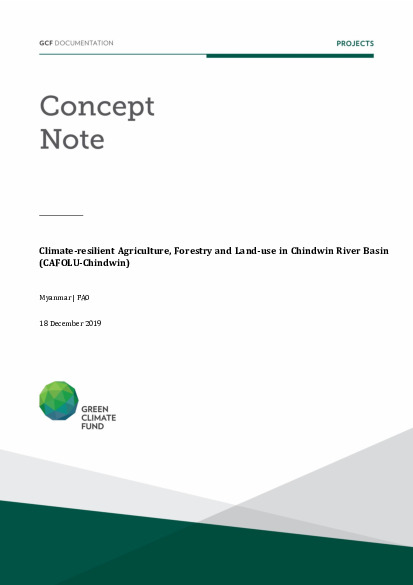Climate-resilient Agriculture, Forestry and Land-use in Chindwin River Basin (CAFOLU-Chindwin)

Climate-resilient Agriculture, Forestry and Land-use in Chindwin River Basin (CAFOLU-Chindwin)
This Concept Note (CN) proposes a GCF project, “Climate-resilient Agriculture, Forestry and Land-use in Chindwin River Basin” (CAFOLU-Chindwin), to establish enabling conditions in the basin for public and private investments for low-emission and climate-resilient agriculture, forestry and land-use. The project will assist the Government of the Republic of the Union of Myanmar (GoRUM) in establishing its first “investment-ready jurisdiction” based on the river basin boundaries for Reducing Emissions from Deforestation and Forest Degradation (REDD+) and climate-resilient agriculture.
The GoRUM has identified the Chindwin River Basin (CRB) as one of the country’s priority regions for immediate climate action. This agriculturally significant basin with high forest cover has experienced alarming rates of deforestation and forest degradation and increased climate-induced disaster risks that threaten not only the sustainable development of the region but that of the whole country as the CRB is responsible for over a fifth of the country’s rice production and provides vital ecosystem services that are essential for the livelihoods and well-being of its inhabitants and downstream populations along the Ayeyarwady River. The project will address climate change threats to sustainable development that are commonly shared across the basin through its distinct downstream-upstream relationships. The project will demonstrate the effectiveness and efficiency of a subnational approach to low-emission, climate-resilient and sustainable agriculture, forestry and land use. The project will also establish a jurisdictional-scale enhanced transparency framework, which is innovative and considered highly scalable and replicable. The expected outcome of the project will instigate transformational change in agriculture, forestry and land use in other river basins for 600,000 people of beneficiaries.